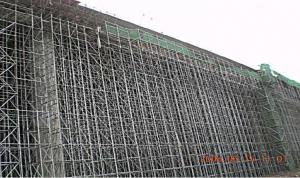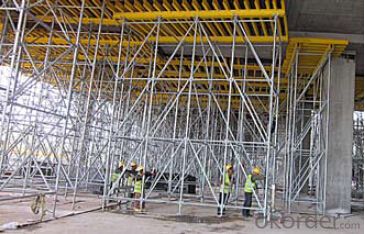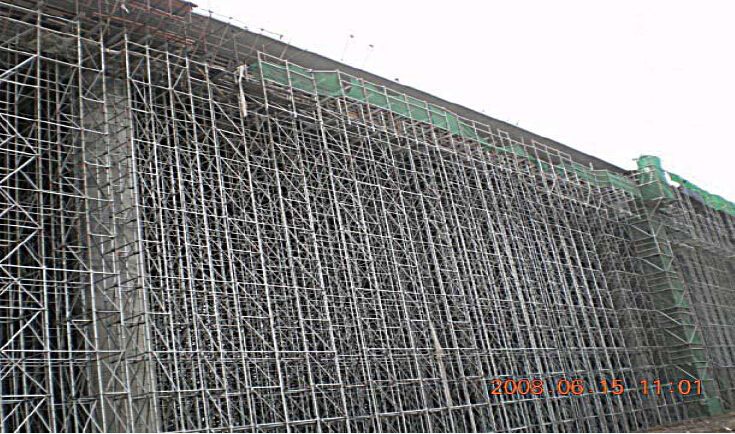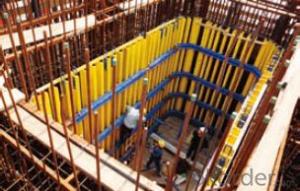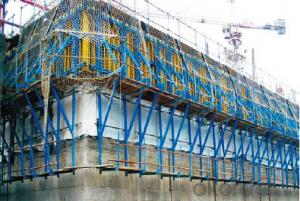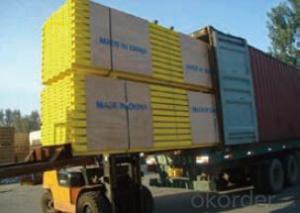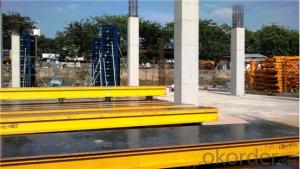Tower scaffolding for formwork and scaffolding systems
- Loading Port:
- Tianjin
- Payment Terms:
- TT OR LC
- Min Order Qty:
- 50 m²
- Supply Capability:
- 1000 m²/month
OKorder Service Pledge
Quality Product, Order Online Tracking, Timely Delivery
OKorder Financial Service
Credit Rating, Credit Services, Credit Purchasing
You Might Also Like
Tower Scaffolding
Shoring tower is an effective supporting system. It is easy to assemble and dismantlement, and
has excellent stability and bearing capacity. It has been widely used in the construction of industry
& residential buildings , bridges, tunnels and dam project, etc.
Characteristics:
◆ High degree of standardization.
◆ Easy storage and transportation
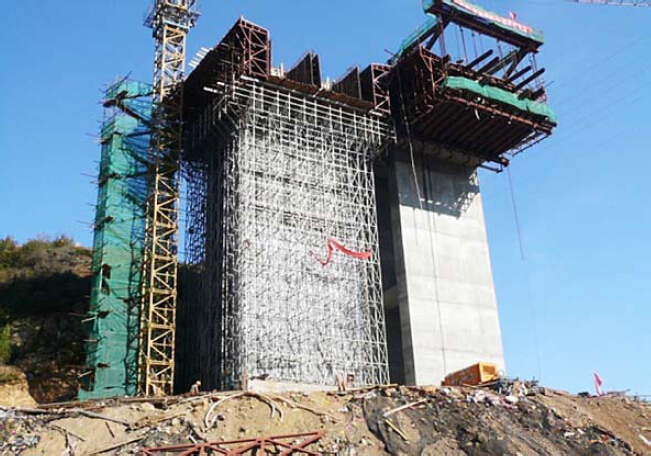
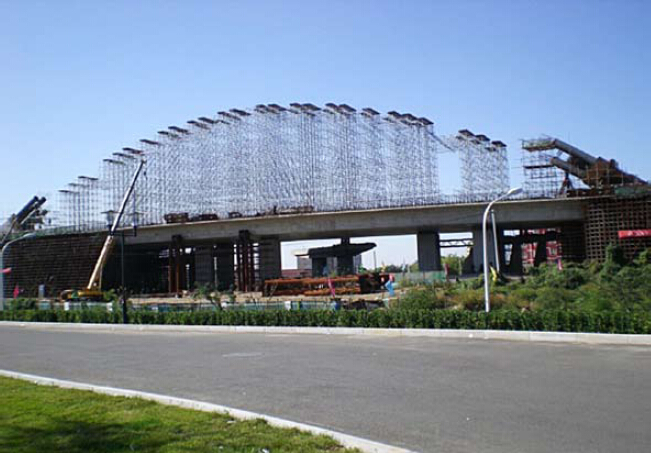
- Q: Can steel formwork be easily modified or adjusted during construction?
- Yes, steel formwork can be easily modified or adjusted during construction. Steel is a highly versatile material that can be cut, welded, or reshaped to fit different requirements. This flexibility allows for quick modifications or adjustments to the formwork system, making it a practical choice for construction projects that require frequent changes or adaptations.
- Q: How does steel formwork handle concrete pump pressure?
- Steel formwork is ideal for managing the force exerted by a concrete pump due to its strength and durability. It can withstand substantial pressure without deforming or failing. The formwork system is designed to evenly distribute the force from the concrete pump throughout the structure, preventing localized stress concentration. Moreover, steel formwork is rigid and stable, ensuring that it maintains its shape and integrity during the pumping process. This enables a smooth and efficient flow of concrete, eliminating the risk of the formwork collapsing or buckling under pressure. In summary, steel formwork is specifically designed to handle the pressure from the concrete pump, making it a dependable and secure choice for construction projects.
- Q: How does steel formwork impact the overall construction productivity?
- Steel formwork has a significant impact on overall construction productivity due to its numerous advantages over other types of formwork systems. Firstly, steel formwork is highly durable and can withstand multiple uses, making it a cost-effective option for construction projects. Unlike traditional timber formwork, steel formwork does not warp or shrink, ensuring consistent dimensions and reducing the need for frequent repairs or replacements. This durability saves time and money by eliminating the delay caused by formwork maintenance or replacement. Additionally, steel formwork offers superior strength and stability, allowing for the construction of larger and more complex structures. The rigid and sturdy nature of steel formwork ensures that it can support heavy concrete loads without any deformation or collapse. This strength and stability not only enhance the safety of the construction site but also facilitate the construction process by enabling faster pouring of concrete and reducing the need for additional support structures. Moreover, steel formwork is highly versatile and can be easily customized to meet specific project requirements. It can be easily assembled, disassembled, and repositioned, allowing for efficient use in various construction phases. This flexibility saves time and effort as it eliminates the need for constantly constructing new formwork for different parts of the structure. The ability to reuse steel formwork also reduces material waste, further contributing to improved productivity. Furthermore, steel formwork offers better surface finishes compared to other formwork systems. Its smooth and rigid surface ensures that the concrete achieves a high-quality finish, reducing the need for additional finishing work such as plastering or leveling. This results in time savings and improved overall construction productivity. In conclusion, steel formwork positively impacts overall construction productivity by providing durability, strength, stability, versatility, and high-quality finishes. Its long-lasting nature, ease of use, and ability to withstand heavy concrete loads contribute to reduced downtime and increased efficiency on construction sites. With these advantages, steel formwork proves to be an essential component in enhancing construction productivity.
- Q: What are the different types of finishes available for steel formwork?
- Steel formwork offers a variety of finishes, each with its own advantages and characteristics. Here are some commonly used finishes: 1. Smooth finish: This is the most basic option, leaving the steel formwork untreated. It creates a clean and smooth surface, perfect for achieving a polished concrete finish. 2. Galvanized finish: To protect against corrosion, the steel formwork is coated with a layer of zinc. This durable finish can withstand harsh weather conditions, so it is ideal for outdoor applications. 3. Powder-coated finish: A dry powder is applied to the steel formwork and then baked on, resulting in a decorative and long-lasting coating. It is resistant to chipping, scratching, and fading, and offers a wide range of colors for customization. 4. Painted finish: Another common choice is to paint the steel formwork. This not only enhances its aesthetics but also provides protection against corrosion. The type of paint used can vary based on project requirements, such as epoxy or acrylic paints. 5. Shot-blasted finish: By projecting small steel shots at high velocity onto the formwork surface, shot blasting removes impurities, rust, or old coatings, creating a clean and textured finish. This type of finish is often desired for better concrete adhesion. 6. Treated finish: Some steel formwork can be treated with special coatings or chemicals to enhance its properties. For instance, anti-stick coatings prevent concrete from sticking to the formwork, making it easier to remove after curing. Other treatments may include rust inhibitors or fire-resistant coatings. When choosing a finish for steel formwork, factors such as intended use, environmental conditions, desired aesthetics, and budget should be considered. Consulting a professional or manufacturer can help determine the most suitable finish for a specific project.
- Q: How does steel formwork affect the overall sound insulation of a structure?
- The overall sound insulation of a structure can be significantly influenced by steel formwork. Steel formwork, due to its dense and rigid nature, tends to transmit sound vibrations more efficiently compared to materials like wood or plastic. This means that extensive use of steel formwork in a building's construction can potentially reduce its sound insulation capabilities. The transmission of sound through steel formwork primarily occurs through three mechanisms: airborne sound, impact sound, and structure-borne sound. Airborne sound refers to sound waves traveling through the air and being transmitted through the steel formwork. Impact sound occurs when a sound wave hits the steel surface, causing it to vibrate and transmit the sound further. Structure-borne sound refers to vibrations traveling through the steel formwork and being transmitted to other parts of the building. To mitigate the negative impact of steel formwork on sound insulation, various measures can be taken. One approach is to incorporate additional sound-absorbing materials, such as acoustic panels or insulation, on the interior surfaces of the structure. These materials can help reduce the transmission of airborne sound waves and dampen the vibrations caused by impact or structure-borne sound. Additionally, proper sealing and jointing of the formwork can minimize sound leakage through gaps or cracks. It is important to recognize that the overall sound insulation of a structure is not solely determined by the formwork material. Other factors, such as wall thickness, insulation type, and the design of windows and doors, also play a crucial role. Therefore, while steel formwork may have a negative impact on sound insulation, it is possible to compensate for this by implementing appropriate acoustic design strategies and integrating soundproofing techniques throughout the building's construction process.
- Q: How does steel formwork contribute to faster construction?
- There are several ways in which steel formwork speeds up construction. Firstly, steel formwork is exceptionally durable and can endure multiple uses. This means it can be reused on various construction projects, reducing the need to constantly manufacture new formwork. This not only saves time but also cuts costs associated with buying new materials for each project. Moreover, steel formwork is quick and simple to assemble and disassemble. The modular nature of steel formwork allows for efficient installation and removal, enabling construction teams to complete projects at a faster pace. This is particularly advantageous for projects with tight schedules or where speed is crucial. Furthermore, steel formwork provides a smooth and consistent surface finish, eliminating the need for additional plastering or finishing work. This saves time and effort during the construction process, as there is no need to wait for plaster or other finishing materials to dry before moving on to the next stage. Additionally, steel formwork offers greater design flexibility. Steel can be easily fabricated into various shapes and sizes, allowing for the construction of complex structures. This versatility eliminates the need for expensive and time-consuming custom formwork solutions, as steel formwork can be adapted to meet the specific requirements of each project. Lastly, steel formwork is renowned for its excellent strength and stability. It can withstand heavy loads and adverse weather conditions, ensuring the safety and stability of the construction site. This reduces the risk of delays due to structural issues or the need for additional reinforcements, allowing the construction process to progress smoothly and efficiently. Overall, the use of steel formwork in construction projects speeds up construction by providing durability, easy assembly and disassembly, a smooth surface finish, design flexibility, and enhanced strength and stability. These factors combined help to streamline the construction process and reduce the overall project timeline.
- Q: What are the common safety training requirements for steel formwork installation?
- The common safety training requirements for steel formwork installation involve several key aspects to ensure the safety of workers and the successful completion of the project. These requirements may vary depending on the specific regulations and standards set by the local authorities and the company's policies. However, some of the common safety training requirements for steel formwork installation include: 1. General Construction Safety Training: All workers involved in steel formwork installation should receive general construction safety training, which covers topics such as hazard identification, personal protective equipment (PPE) usage, emergency procedures, and safe work practices. This training ensures that workers have a basic understanding of construction site safety. 2. Fall Protection Training: Given that steel formwork installation often involves working at heights, fall protection training is crucial. Workers should be trained on the proper use and inspection of fall protection equipment, such as harnesses, lanyards, and anchor points. They should also learn how to set up and dismantle temporary fall protection systems like guardrails and safety nets. 3. Material Handling and Lifting Training: Steel formwork components can be heavy and require proper lifting techniques to avoid injuries. Workers should receive training in safe lifting practices, including correct body mechanics, proper use of lifting equipment such as cranes or forklifts, and understanding load capacities. 4. Scaffold Safety Training: Steel formwork installation often involves the use of scaffolding to access higher areas. Workers should be trained on safe scaffold erection, inspection, and usage. This includes knowledge of scaffold components, stability, fall protection on scaffolds, and safe practices for working on scaffolds. 5. Electrical Safety Training: Steel formwork installation may involve working near electrical systems or equipment. Workers should receive training on electrical safety, including identifying electrical hazards, using lockout/tagout procedures, and understanding safe distances from power lines. 6. Hazard Communication Training: Workers should undergo training on hazard communication protocols, including the identification and understanding of safety data sheets (SDS) and proper handling of hazardous materials commonly used in steel formwork installation. 7. First Aid and CPR Training: In the event of an accident or injury on the job site, workers should be trained in basic first aid and cardiopulmonary resuscitation (CPR) techniques. This training can help stabilize an injured worker until professional medical help arrives. It is important for employers to ensure that all workers receive comprehensive safety training before commencing steel formwork installation. Regular refresher courses and ongoing safety awareness programs should also be conducted to reinforce safe work practices and maintain a high level of safety on the job site.
- Q: Is steel formwork suitable for projects with high concrete strength requirements?
- Yes, steel formwork is suitable for projects with high concrete strength requirements. Steel formwork is known for its high strength and durability, making it ideal for projects that require high concrete strength. It can withstand the pressure and weight of the concrete, ensuring that it maintains its shape and stability during the pouring and curing process. Additionally, steel formwork provides a smooth and uniform finish to the concrete, which is important for achieving high strength and quality in the final product. Moreover, steel formwork can be easily reused multiple times, making it a cost-effective option for projects with high concrete strength requirements.
- Q: What are the different types of steel formwork joint solutions?
- There are several types of steel formwork joint solutions, including lap joints, butt joints, corner joints, and T-joints. These solutions are used in construction to ensure the stability and integrity of the formwork system during concrete pouring.
- Q: Can steel formwork be used in bridge construction?
- Bridge construction can indeed utilize steel formwork. This entails the utilization of steel panels or frames to achieve the desired shape and structure of the bridge during the construction phase. The preference for steel formwork in bridge construction is largely due to its exceptional durability, strength, and capacity to endure the significant loads and stresses that bridges are subjected to. Moreover, it has the ability to withstand the heavy pouring of concrete and can be used repeatedly, rendering it a cost-effective option for bridge construction. Furthermore, steel formwork permits design flexibility, enabling the construction of intricate and complex shapes, thereby ensuring that the bridge meets the desired specifications and requirements. In conclusion, steel formwork is highly favored in bridge construction owing to its strength, durability, reusability, and versatility.
Send your message to us
Tower scaffolding for formwork and scaffolding systems
- Loading Port:
- Tianjin
- Payment Terms:
- TT OR LC
- Min Order Qty:
- 50 m²
- Supply Capability:
- 1000 m²/month
OKorder Service Pledge
Quality Product, Order Online Tracking, Timely Delivery
OKorder Financial Service
Credit Rating, Credit Services, Credit Purchasing
Similar products
Hot products
Hot Searches
Related keywords

